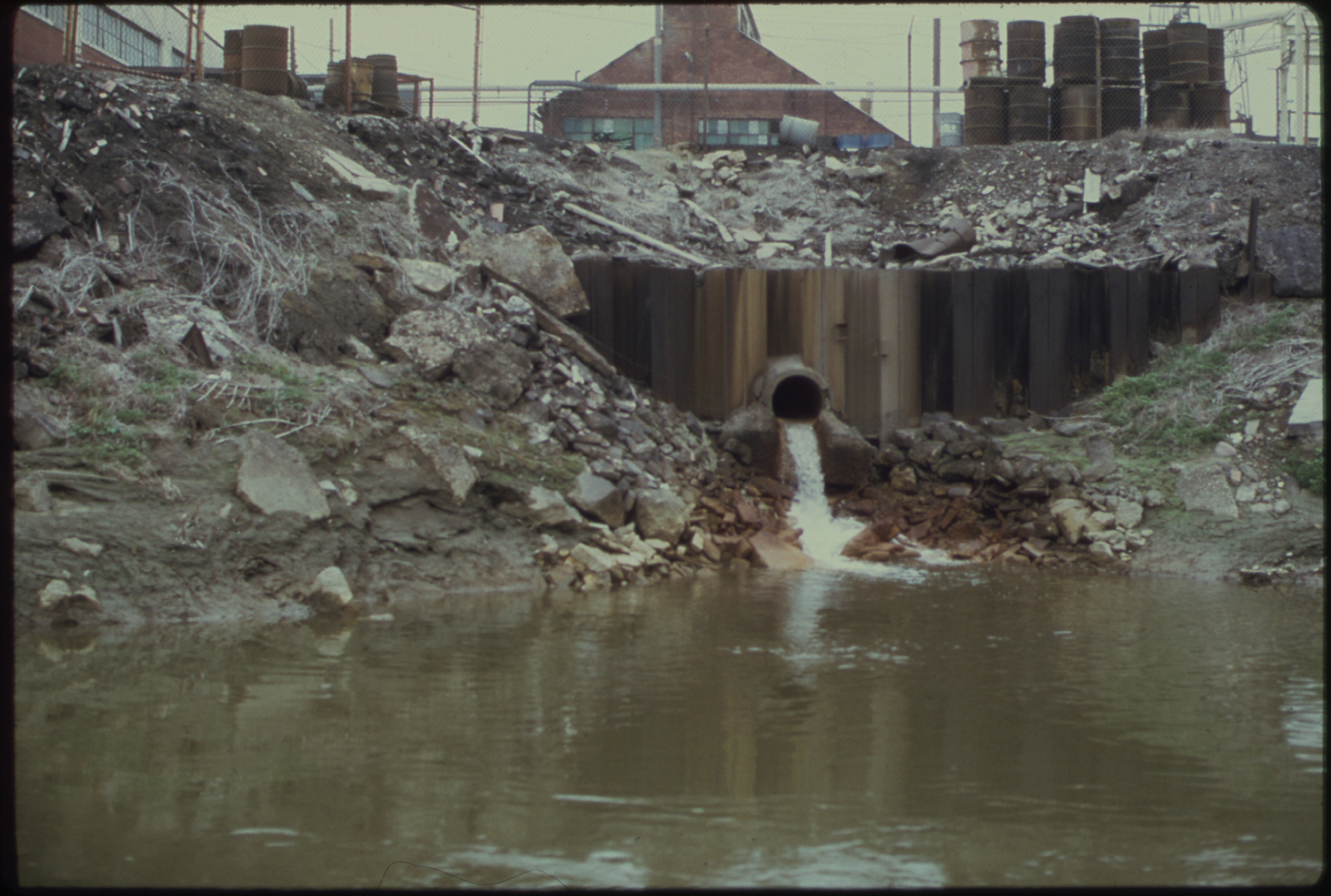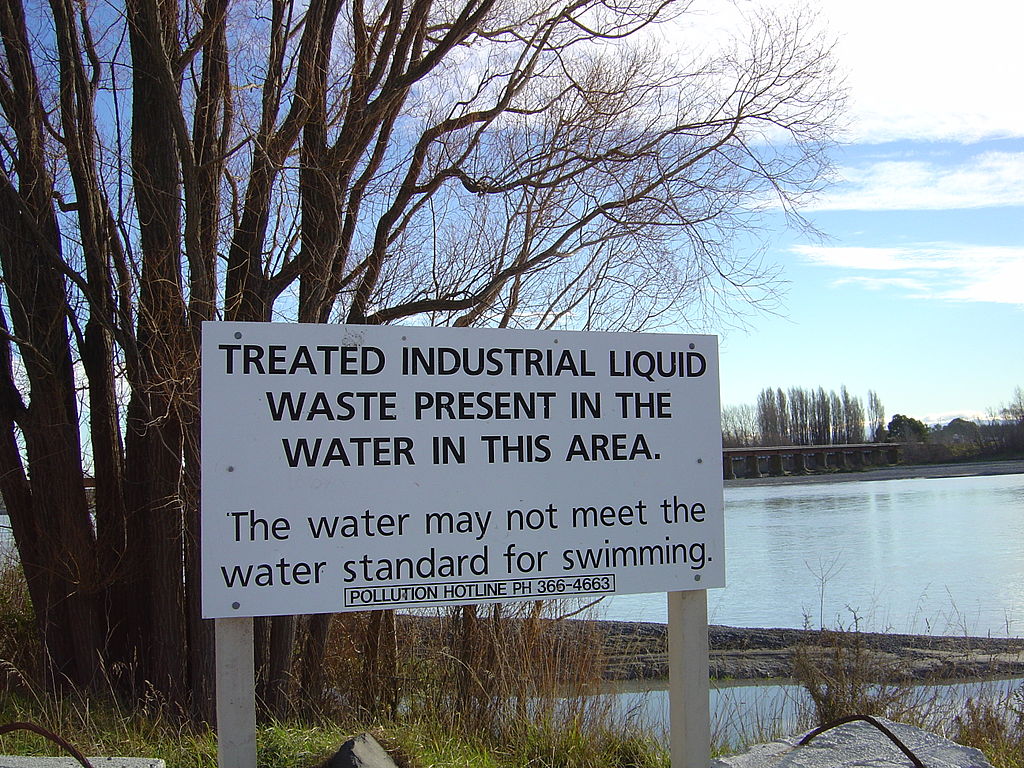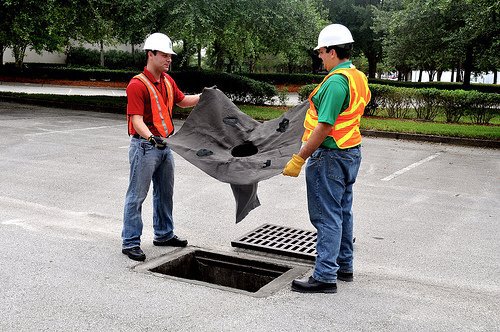STORMWATER VIOLATION: $145,000 in Fines
A manufacturing facility in Fairbury, NE was recently cited and fined $145,000 for alleged violations of EPA’s Clean Water Act (CWA) according to a press release from EPA Region 7 . In order to be compliant with CWA and the National Pollutant Discharge Elimination System (NPDES) , facilities are required to have a permit outlining procedures for wastewater handling to minimize and prevent water pollution. In the Fairbury facility case, the following violations were cited:

cadmium
What is the Clean Water Act (CWA) and the National Pollutant Discharge
Elimination System (NPDES)?
 Created in 1972, the NPDES permit program
was created for the purpose of regulating water pollution, starting with any
point-of-source that discharges pollutants into U.S. waterways. There are two
levels of control within the permit: technology-based limits and water
quality-based limits (with water-quality based on the effectiveness of
technology-based limits.) Currently, there are 46 states and one territory with
authorization to implement the NPDES program. NPDES enforcement is authorized by
the EPA to the various states, tribal and territorial governments, allowing
them to perform their own permitting, administration and enforcement. A NPDES permit is a license designating the quantity
of pollutants a facility can legally discharge into specific waterways under
certain restrictions. There are two main permits:
Created in 1972, the NPDES permit program
was created for the purpose of regulating water pollution, starting with any
point-of-source that discharges pollutants into U.S. waterways. There are two
levels of control within the permit: technology-based limits and water
quality-based limits (with water-quality based on the effectiveness of
technology-based limits.) Currently, there are 46 states and one territory with
authorization to implement the NPDES program. NPDES enforcement is authorized by
the EPA to the various states, tribal and territorial governments, allowing
them to perform their own permitting, administration and enforcement. A NPDES permit is a license designating the quantity
of pollutants a facility can legally discharge into specific waterways under
certain restrictions. There are two main permits:
- 1.An Individual permit is tailored to suit a specific facility. It is up to the facility to submit the proper forms and applications to the permitting authority and, based upon the information received, a permit will be issued to best facilitate water pollution regulations. An individual permit should not exceed 5 years with the requirement the facility will reapply prior to the expiration date. In the case of acquiring a permit, it is up to the operator of the facility in question to submit a NPDES Permit Application to the permitting authority.
- 2.A general permit , which is the most common, covers a group of similar dischargers within a certain geographical area. This is the most cost-effective approach because a large number of facilities can be covered under a single permit. Generally, a Notice of Intent (NOI) is required to be considered for inclusion within the general permit. However, some facilities are automatically covered by a general permit without the need to submit a NOI by simply being in a certain geographical area.

EPA has step by step instructions on the permitting process for facilities. In most cases, it is useful to contact the local government about what kind of permit is in place for your geographical area. California State Water Resources Board provides information for California residents about where to discharge and acquire a NPDES permit (which in California is also referred to as a waste discharge requirement (WDR)).
In the alleged case of the Fairbury facility, the regulations laid out in the permit were disregarded by the facility and thus resulted in a citation and contamination of local waterways. Maintaining compliance with EPA and the CWA is an important part in a healthy work environment.
CP Lab Safety offers many solutions to help maintain compliance during harsh weather conditions when run-off and polluted stormwater become an issue. Stormwater Management plans can be optimized through the use of curb guards, basin and drain guards, dewatering bags, storm drain catch basins, oil absorbents and skimmers, all available at www.cplabsafety.com. Meeting stormwater regulations is more efficient with the proper equipment and preparation.
Sources:
https://www.epa.gov/npdes/about-npdes
https://www.epa.gov/ne/loveland-products-inc-fairbury-ne-clean-water-act-public-notice
Recent Posts
-
Safety First: Choosing the Right PPE for Your Laboratory
Are you aware that over 20,000 workplace injuries occur annually i …1st Oct 2025 -
The Future of Lab Supplies: Trends You Can't Ignore
As laboratories across various industries evolve, the demand for i …29th Sep 2025 -
Ergonomics in the Lab: Choosing Equipment for Comfort
In the fast-paced world of laboratory work, comfort should not be …15th Sep 2025
